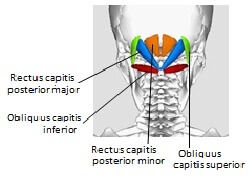If like me you have had your fair share of Hamstring Injuries, you may find the article below of interest. Especially as we age and tightness increases.
Below are snippets of an interesting study. The researchers used PNF (or active resistance) stretching to examine the effect of upper neck muscles on hip joint range of motion.
Stretching the hamstrings caused 9% increase in hip extension range of motion as measured with the passive ‘straight leg raise’ (SLR) manouver. Yet stretching the small suboccipital muscles(which connect the occiput with the upper two vertebrae) resulted in almost twice as much (13%) increase of hamstring length as measured with the same SLR test.
The explanation for this extraordinary finding has probably more to do with the neurological importance of the suboccipital muscles. These small muscles have the highest density of muscles spindles in the whole body (and apparently on the whole planet!) and have a major sensory function for antigravity organization. Via the so called ‘Tonic Neck Reflex’ (which we share with most other mammals) an extension of these muscles tends to trigger a tonus decrease of the hipjoint extensors.
The sub-occipital muscles are located in your posterior neck at the base of your skull. Their function is to tilt the head back into extension, assist in rotation of the head and also stabilise the skull on its first two vertebrae, the atlas and axis. If these muscles are short and hold tension the posterior neck will feel tight and inhibited, headaches may occur and proprioception and balance may also be affected. Massage and stretching will help to mobilise the area.
The hamstring muscles are located on the posterior side of the thigh and their action is to flex the knee and extend the hip. They also play an important role in hip stability and tight hamstrings will sometimes cause lower back pain. Massage and stretching will also help to loosen these muscles.
The relationship between the two?
The superficial back line (SBL) is a continuing line of fascia and muscle from head to heel which includes both the sub-occipitals and the hamstrings. The SBL helps keep us upright and is connected by the one neural system. The very small sub-occipital muscles have a link to the duramater ( the membrane enveloping brain and spinal cord) and because of this are often described as the control center of the SBL having an effect on the movement of the muscles within the SBL, particularly the hamstring group.
In summary, there is often a noticeable benefit in massaging the sub-occipitals in order to gain release of the hamstrings. This indirect approach is very beneficial when the hamstrings are injured and sensitive or just have not responded to direct massage and stretching techniques.
Many journal articles have been written about this curious muscle connection and a recent article in the Journal of Physical Therapy Science, published online in January 2015 details another recent study.
The article can be read HERE






